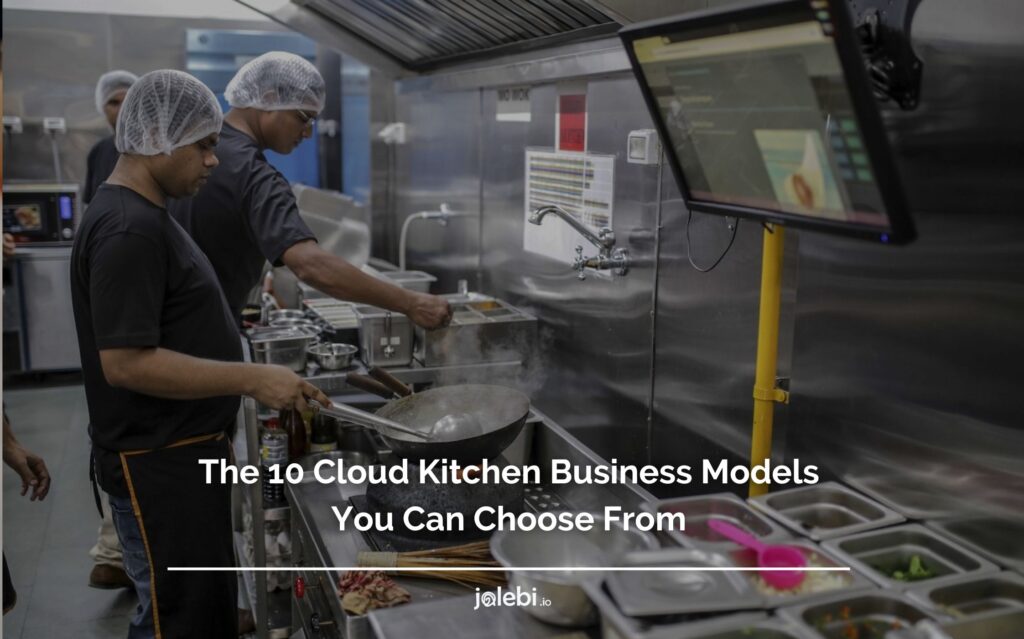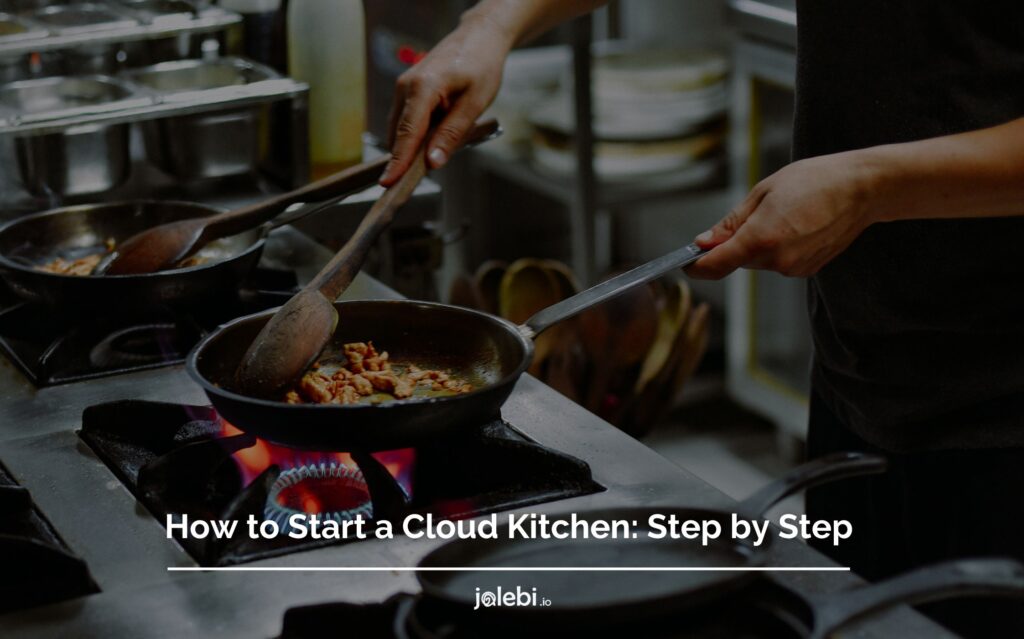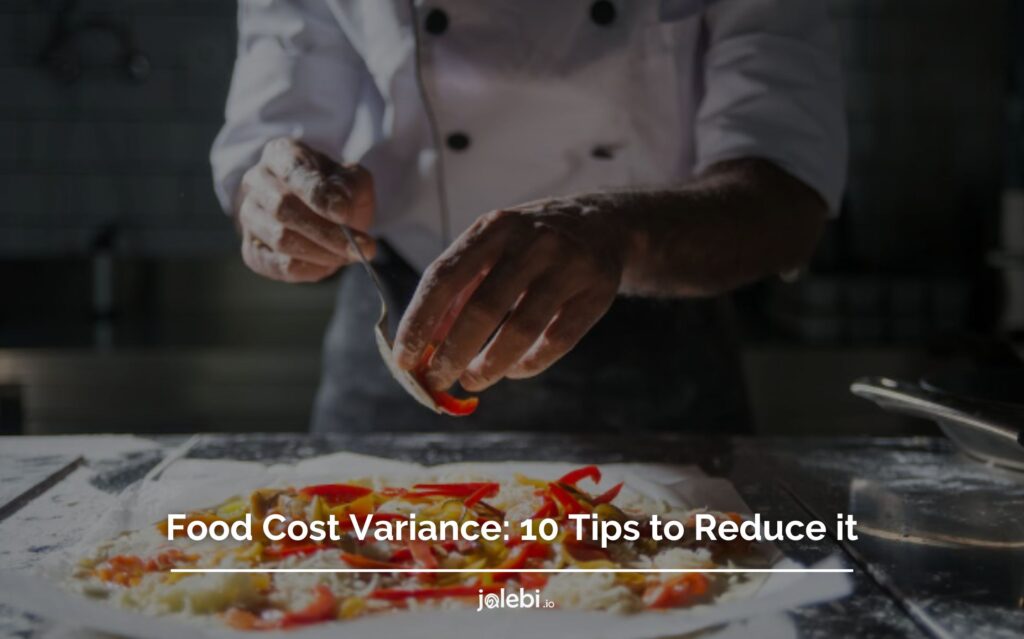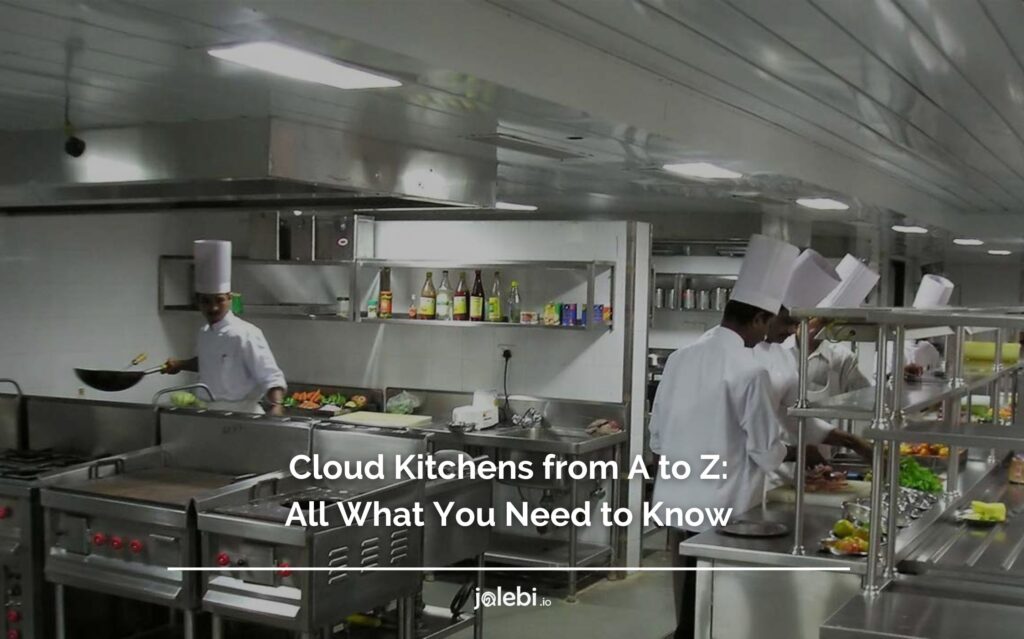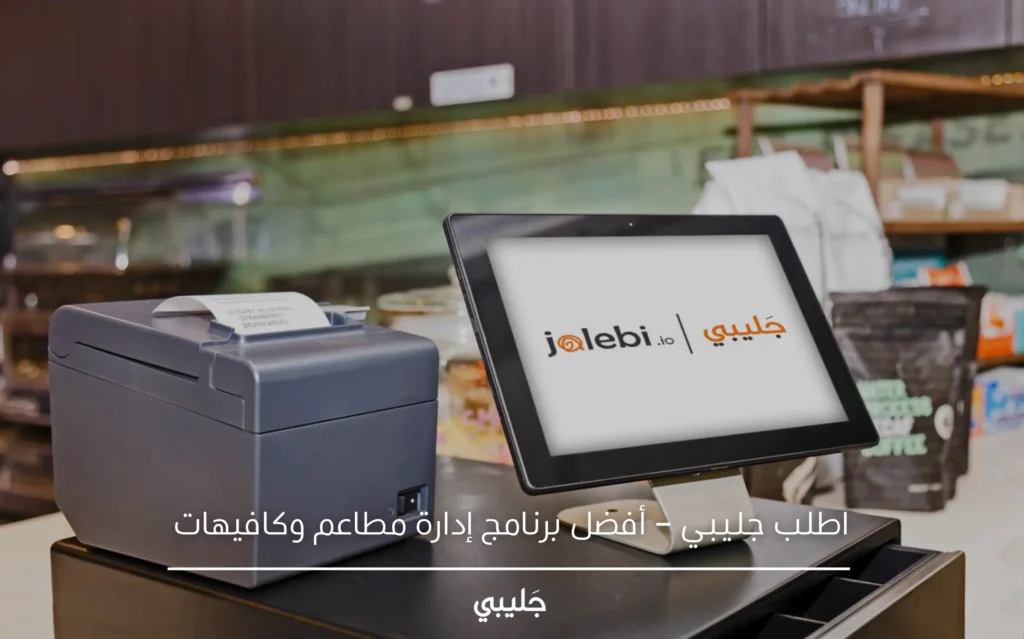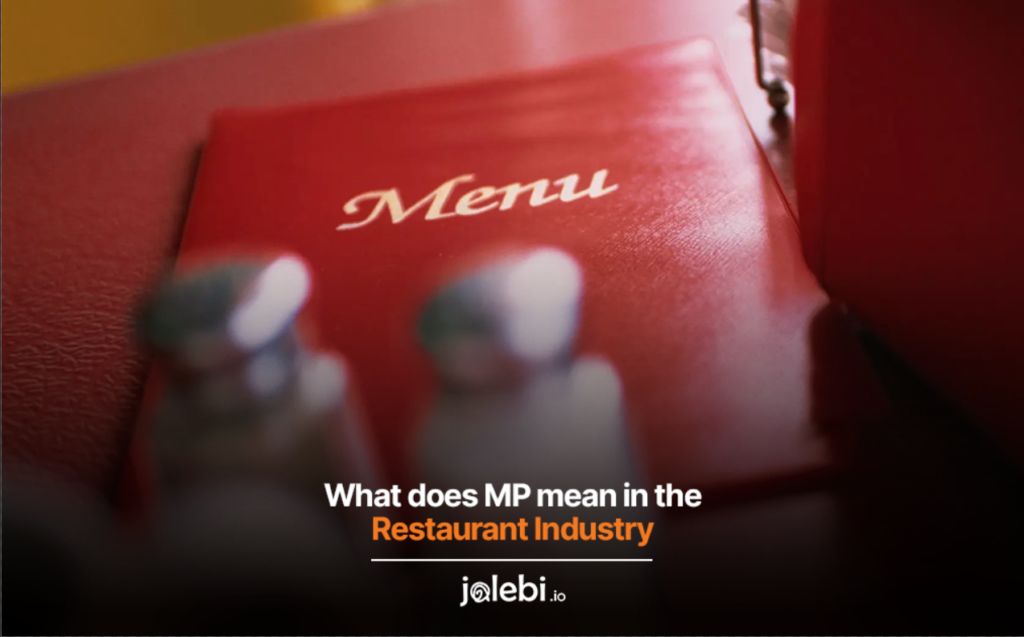Table of Contents
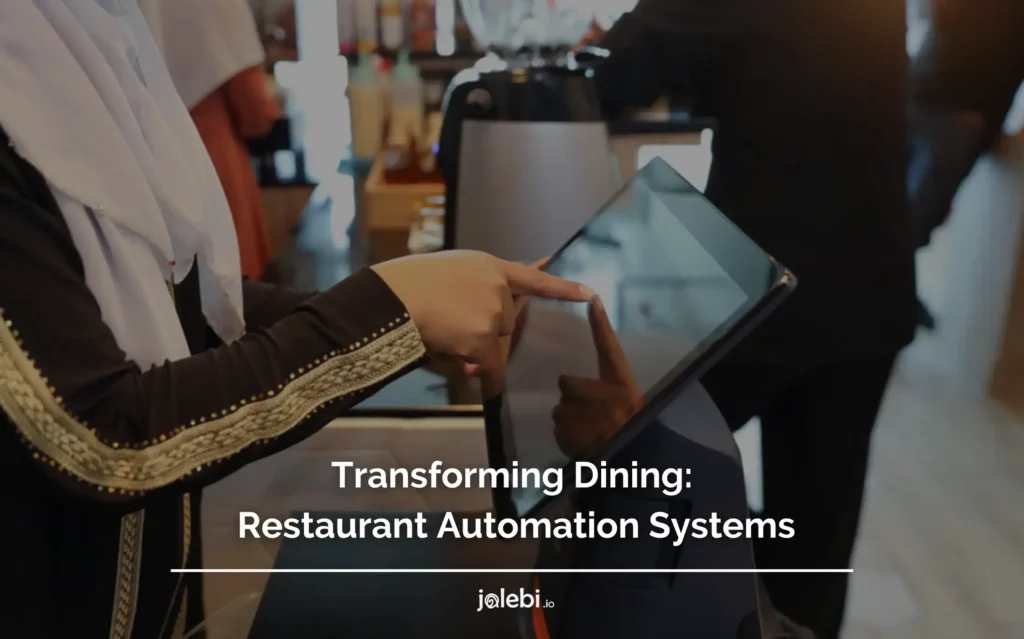
In recent years, restaurant technology has undergone a significant transformation, with the rise of restaurant automation systems being one of the most notable changes.
These systems offer a range of functionalities, from automated restaurant ordering system and payment processing to inventory management and staff scheduling.
As the restaurant industry becomes more competitive and customer expectations continue to evolve, restaurant owners are turning to restaurant automation systems to streamline operations, cut costs, and improve efficiency.
While some may argue that such technology detracts from the traditional dining experience, many others see it as an opportunity to enhance the customer experience and free up staff to focus on more important tasks, such as food preparation and customer service.
In this post, we’ll explore the world of restaurant automation systems, looking at the various types of technology available, how they work, and the potential benefits they can offer to restaurants
What Is A Restaurant Automation System?
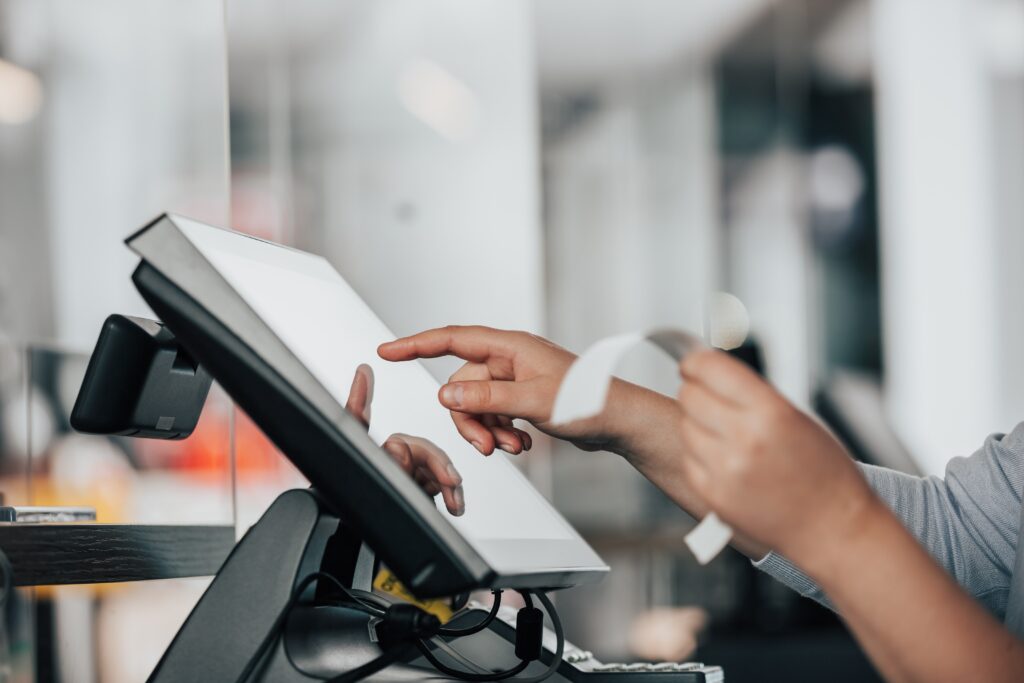
A restaurant automation system is a set of technology tools and software designed to automate restaurant business, such as ordering, payment processing, inventory management, and staff scheduling.
These systems can range from simple self-service kiosks and digital menus to more complex systems that integrate with kitchen display systems and POS software.
The goal of automated restaurant ordering system is to automate the restaurant business and streamline the overall operations of a restaurant.
What is food service automation?
Food service automation in a restaurant management system refers to the use of technology to streamline and enhance various aspects of food service operations.
This includes automating processes such as order taking, payment processing, inventory management, and kitchen operations.
The goal is to improve efficiency, accuracy, and customer service while reducing manual labor and errors in restaurant management.
Hacks To Improve Restaurant Efficiency In UAE
Improving restaurant efficiency in UAE is a critical factor for ensuring customer satisfaction.
The bustling economy and large population of people of diverse cultures demand high-quality service that combines consistency with attention to detail.
Therefore, restaurant owners must ensure that their operations can provide top-notch service to stay competitive.
Whether it’s fine dining or casual eats, here are some hacks that can help you manage expectations and deliver excellent customer service:
1. Make The Best First Impression
When it comes to creating an enjoyable dining experience, first impressions count. Customers should be seated promptly and their orders should be taken quickly.
Staff members should go out of their way to explain unfamiliar menu items, make recommendations, and answer any questions customers may have.
2. Create An Inviting Atmosphere
In addition, sprucing up the décor can create an inviting atmosphere while customizing each order based on the diner’s preference will offer a unique experience.
3. Get Creative With Presentation Methods
Creativity with presentation methods will highly impress your clients while also engaging them in communion with culinary treats shared by staff members.
4. Be Courteous
Lastly, courteousness combined with accuracy will further personalized services for guests.
10 Ways to Automate Time-Consuming Tasks
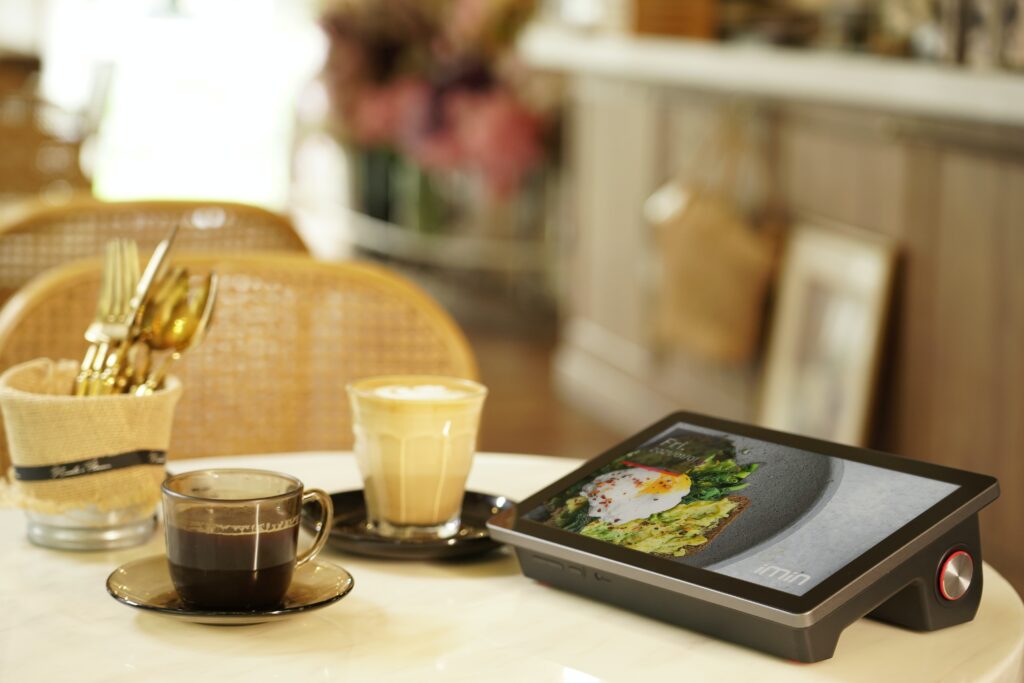
1. Payroll
Processing payroll can be a daunting task for restaurant owners, with varying regulations and complexities based on the locale.
Keeping up with the nuances of different local laws and regulations is difficult enough, not to mention ensuring accuracy in managing tips and other income sources.
Managing payroll manually can take a lot of time away from other important tasks, leaving restaurant owners at risk of making mistakes that could result in penalties or compliance issues.
Using accounting software is an easy solution that allows restaurant owners to streamline their payroll process and automate this time-consuming job.
In addition to helping ensure that employees are paid accurately and promptly, software solutions offer additional features such as automated tax calculations, customization options, and reporting capabilities.
2. Scheduling
Managers are feeling increasingly overwhelmed trying to manually create the ideal work schedule for one week, let alone months into the future.
Traditional methods like whiteboards and spreadsheets cannot accurately keep up with today’s unpredictable and changing employee schedules.
Staffing shortages have put an even greater emphasis on finding a reliable way to match employee expectations with the shifts that need to be filled.
Not only must managers make sure they have sufficient coverage at all times of the day, but they also need to make sure time-off requests and shift preferences are tracked properly.
That is why it pays off to invest in staff management software which can automate much of this tedious task – freeing up time and effort so that businesses can focus on building and retaining quality employees.
3. Inventory
Having a proper inventory management system is critical for any restaurant. With a return to dining in, takeout, and delivery orders on the rise, restaurant owners must stay ahead of demand and keep up with customer tastes.
To ensure their success, restaurants need to maintain an accurate record of ingredients on hand, as well as when these ingredients need to be restocked.
An efficient inventory system ensures that restaurants don’t waste costly perishable items or over-order items that will ultimately go unused.
Additionally, anticipating customer demand is essential for effective inventory management. Restaurants should monitor current trends and changing tastes to have the products customers want available when needed.
Keeping track of up-to-date consumption data can provide invaluable insights for future planning.
With comprehensive inventory control strategies in place, restaurants can prevent spoilage and capitalize on potential sales opportunities while also managing costs during inflationary times.
4. Marketing
Marketing strategies are essential for restaurant owners to stay competitive, reach new customers, and maintain regular loyalty.
To make the most of their marketing efforts, restaurant owners need to analyze customer visits and information to create personalized experiences that keep people happy and excited about their dining options.
Unfortunately, creating effective marketing campaigns can take a lot of time and effort when staff is limited or short on resources.
Restaurant owners have the option of hiring a dedicated marketer to manage their brand’s presence; however, this is not always feasible for small restaurants that might have more limited budgets but still want to maximize their marketing impact.
To reduce the workload without sacrificing effectiveness restaurant owners can consider using specialized software that is designed specifically for the food service industry.
These tools provide numerous features like automated scheduling, analytics tracking, increased visibility on social media platforms, targeted promotion management, and more – all allowing restaurant owners to centrally manage their entire online presence so they can focus on what matters most: attention to the customer experience both inside and outside their walls.
5. Customer Directories
Maintaining customer relationships and loyalty is a critical part of staying profitable in any business. An effective way to do this is to have an up-to-date customer directory.
A comprehensive customer directory provides vital insights into who your customers are, allowing you to better understand their preferences and needs.
If you provide great customer service on top of that, you’ll create a ripple effect that will encourage them to keep coming back.
Creating a customer directory from scratch can be overwhelming and time-consuming, so using integrated software with your POS system is a good idea.
Doing this will automate the process of creating profiles when customers make purchases; this creates an order history that can be tracked across channels or locations too.
Having these insights will help businesses make the right decisions when developing marketing campaigns or product offerings, as they will have a more direct understanding of what customers truly want.
Implementing an effective customer directory can help businesses achieve higher rates of customer retention and loyalty in today’s competitive markets.
6. QR Code Menu
Implementing a QR code menu can significantly streamline your restaurant operations.
Instead of traditional paper menus, customers can scan the QR code with their smartphone to access the digital menu.
This allows for quick updates to your menu as you can change it in real-time to account for out-of-stock items or new dishes.
It can also lead to quicker order placements and reduce the workload for your staff.
Furthermore, a digital menu offers an opportunity to enhance the dining experience with visuals of dishes, detailed descriptions, and even pairing recommendations.
7. Online Payment System
An online payment system is essential for modern restaurants.
It reduces the need for cash handling and makes the payment process faster and more efficient.
Integration with your Point of Sale (POS) system can streamline the entire billing process, reducing wait times for customers.
Online payments can also facilitate contactless dining experiences, which have become increasingly important due to health and safety concerns.
Additionally, it offers an opportunity to implement loyalty programs and promotions, enhancing customer retention and engagement.
8. Ordering And Delivery
Automating the ordering and delivery process can significantly improve your restaurant’s efficiency and customer satisfaction.
Online automated restaurant ordering system allow customers to place orders directly from their devices, reducing order-taking errors and freeing up staff time.
For delivery, partnering with third-party delivery platforms or investing in your own delivery infrastructure can expand your reach beyond the dining room.
Furthermore, integrating these systems with your kitchen operations can help manage the workflow, ensuring timely preparation and delivery of orders.
9. Robotic Kitchens
Investing in robotic kitchens may seem futuristic, but many restaurants are already reaping the benefits of automation in food preparation.
Robotic systems can handle repetitive tasks such as chopping, stirring, or frying with consistency and precision, freeing up human staff for more complex tasks.
Automated cooking appliances can ensure consistent cooking times and temperatures, enhancing food quality.
While it involves a significant upfront investment, increased efficiency, and consistency can lead to long-term savings and improved customer satisfaction.
10. Kitchen Safety
Automation can also enhance kitchen safety.
For example, automated cleaning systems can ensure regular, thorough cleaning of kitchen equipment, reducing the risk of foodborne illnesses.
Sensor-based systems can monitor the temperatures of refrigerators or cooking equipment, alerting staff of any issues to prevent food spoilage or potential fire hazards.
Automated ventilation systems can help maintain air quality in the kitchen, contributing to a safer working environment.
In this way, automation not only improves efficiency but also creates a safer kitchen for both staff and customers.
Different Ways To Automate Restaurant Business
Wondering how to automate a restaurant business?
When it comes to automated restaurant equipment, there are a variety of different types available today for both the front and back of the house.
- Self-Serve Kiosks
For the FOH (front of house), many restaurants are now utilizing self-serve kiosks or tablets that allow customers to order their food at their own pace.
Additionally, some restaurants offer robotic servers that can deliver food orders directly to a customer’s table.
- Restaurant Management Systems
For the BOH (back of house), many restaurants have implemented systems that automate a wide range of tasks, such as menu optimization, inventory management, recipe management, food prep scheduling, and delivery tracking, among others.
This automation technology allows restaurants to streamline processes for maximum efficiency and cost savings.
Furthermore, these automated systems can alert employees in real-time when equipment needs maintenance or when stock is low so they can quickly respond to any potential issues before they escalate into costly problems.
With all these innovative tools available at an increasingly affordable price point, it’s no wonder why many people choose to automate a restaurant business.
- Online Ordering Platforms
One of the essential restaurant automation tools is an online ordering platform.
This enables customers to order directly from your website or app using their device – making it easier for them to order the exact items they want while making sure your staff doesn’t have to handle any cash transactions.
- Kitchen Display Systems
Another key technology is a kitchen display system (KDS), which allows orders from multiple channels: such as dine-in services, takeout/delivery apps, and online ordering systems — to be displayed in the kitchen simultaneously.
These streamlines order management so staff can see when orders need to be started and how long each dish should take.
Additionally, some KDS systems even tie into on-site ticket printers and send digital notifications alerting staff about order status changes in real-time.
- AI Assistants
AI assistants are also becoming more popular in restaurant automation.
These AI-driven systems provide customers with personalized recommendations and can even help answer questions about menu items or the restaurant’s hours of operation.
- Automated Restaurant Inventory Management Systems
Lastly, automated restaurant inventory management systems are needed to keep track of all the ingredients used in dishes and to make sure that food is ordered on time.
By using automated restaurant inventory management systems, you can always have what you need when you need it — reducing waste and helping to maintain a consistent quality of food.
Benefits Of Automation Systems For Restaurants
There are numerous benefits of using automation in restaurants. Here are some of the most significant ones that one can enjoy after integrating technology into restaurants.
1- Increased Efficiency And Productivity
By automating tasks like ordering and payment processing, restaurant staff can focus on more important tasks, such as food preparation and customer service. Additionally, automation in restaurants can reduce wait times and minimize errors, leading to faster and more efficient service.
2- Cost savings
Restaurant automation can help reduce labor costs by minimizing the need for manual input and reducing the number of staff required for certain tasks.
Moreover, automation systems can help minimize waste by providing accurate data on inventory levels and usage, leading to more efficient ordering and reduced food waste.
3- Improved Accuracy
Restaurant automation can reduce errors in ordering, payment processing, and inventory management, leading to higher customer satisfaction and fewer losses due to mistakes.
Additionally, technology in restaurants can provide real-time data on inventory levels, allowing restaurants to adjust their ordering and pricing strategies accordingly.
4- Enhanced Customer Experience
Automation systems can improve the speed and accuracy of ordering and payment processing, leading to shorter wait times and a more seamless dining experience.
They can provide personalized recommendations and promotions based on customer data, enhancing the overall dining experience.
Benefits Of Automated Ordering Systems for Restaurants
Let’s have a look at some of the benefits of automated ordering systems for restaurants.
1. A Game-Changer For The Food Industry
The trend for online ordering is on the rise.
This means that restaurants too have to adapt their systems to meet the requirements of their tech-savvy customers.
Without automated ordering systems for restaurants, the servers have to take the orders manually which takes time away from other important tasks that require human input and creativity.
While not having restaurant automation solutions may seem like a small inconvenience, it can lead to the draining of resources on the restaurant’s end.
No doubt, taking orders is a small part of the whole food delivery process but not having it automated can act as a huge strain on time.
Customers too expect a more vigilant and smooth experience when placing an order which can only be achieved through automated ordering systems for restaurants.
Instead of having a conversation over the phone, they prefer to place their orders, pay, and be on their way.
Did you know that food orders placed through mobile ordering systems reached $38 billion in the year 2020?
2. Reduced Staff Involvement
Automated ordering systems for restaurants reduce staff involvement in the order-taking process.
Modern restaurant management allows customers to place their orders on different ordering portals that allow them to customize their orders, including add-ons, and view the delivery options.
Not only does it save time for your customers but it also allows your employees to give their time to more useful and productive tasks rather than simply answering phone calls and manually taking orders.
Modern restaurant management systems also reduce the possibility of human error which may occur on the part of the restaurant staff when taking orders manually.
3. Automate Your Marketing Activities
Along with making placing orders a breeze, modern restaurant management also works to improve the marketing activities of restaurants.
This means that you can carry out your marketing activities automatically which may include sending personalized emails, targeted text messages, and PUSH messages.
Manually asking for customer feedback is not only time-consuming but also ineffective.
After the order has been served or delivered, your customers can give their feedback through the automated ordering systems that would then enable you to make data-driven decisions about your restaurant and its operations.
Top Five Software To Enable Automation In Restaurants
With the rise of restaurant automation systems, software tools are now available to streamline various restaurant operations automation, from ordering to automated restaurant inventory management.
These software tools can help restaurants improve efficiency, reduce costs, and enhance the overall customer experience.
In this section, we’ll explore the top five software tools to enable automation for restaurants.
1- jalebi
Are you tired of manual processes bogging down your restaurant’s operations? Say hello to jalebi, the ultimate automation system for restaurants.
With jalebi, you can say goodbye to long wait times, messy order processing, and inefficient IMS.
Features
- Real-Time Inventory Tracking
jalebi’s automated restaurant inventory management system provides real-time data on stock levels, ingredient usage, and waste, allowing restaurants to optimize their ordering and minimize waste.
This helps restaurants reduce food costs and improve profitability while ensuring that they always have the ingredients they need to meet customer demand.
With jalebi’s inventory tracking, restaurants can make informed decisions about their menu offerings, pricing, and purchasing strategies.
- Reporting
jalebi’s reporting feature provides managers with real-time insights into their restaurant business, allowing them to make informed decisions and identify areas for improvement.
- Automated Ordering
With jalebi, customers can place their orders quickly and easily which eliminates the need for manual order taking, reducing wait times and minimizing errors.
Jalebi’s Ramadan Offers
- Pricing – $25 per month to be reduced to $15.99
- Free trial – increased from 14 days to 1 month
Eid Offers
- 3 months FREE trial
- 30 mins onboarding process
- Starting with $0 for 3 months and after that – $15.99 instead of $25.
With Jalebi, you’ll be able to provide a seamless and personalized dining experience to your customers, while reducing labor costs and minimizing waste. Don’t let outdated processes hold your restaurant back – contact us Jalebi today and experience the benefits of automation in action!
2- Toast
Toast is a cloud-based restaurant management system that helps streamline day-to-day restaurant operations.
With Toast, restaurants can easily manage orders, payments, and inventory, all from one central location.
Features
- Toast’s contactless ordering and payment options help reduce wait times and minimize the risk of errors, while real-time inventory tracking helps restaurants avoid stockouts and waste.
- Additionally, Toast’s analytics dashboard provides insights into restaurant performance, allowing owners and managers to make data-driven decisions to improve profitability.
- The platform also includes tools for payroll management, employee scheduling, and customer loyalty programs.
So if you’re looking for a restaurant management platform that can save you time and money, be sure to check out Toast today!
3. Eat365
Eats365 is a comprehensive restaurant management system that helps automate various aspects of restaurant operations automation.
Features
- The system includes features such as online ordering, table management, and inventory tracking, as well as kitchen automation tools like recipe management and order routing.
- Eats365’s customizable menu management tools help restaurants easily create and modify menus, while its customer relationship management tools enable targeted marketing campaigns and personalized promotions.
- The system also includes features like loyalty programs and gift cards to help restaurants increase customer engagement and repeat business.
It’s an affordable solution that can save you time and money, and ultimately help you run your business more efficiently.
4- Square For Restaurants
Square for Restaurants is a point-of-sale system that helps restaurants manage orders, payments, and deliveries.
Features
- The system includes features such as online ordering, flexible payment, and inventory tracking, as well as reporting and analytics tools to help restaurants understand their performance.
- Square for Restaurants also offers integrations with third-party platforms like DoorDash and Postmates, making it easy for restaurants to manage their delivery operations.
- The system’s scalability allows restaurants to easily add new locations or expand their offerings, making it a great choice for growing businesses.
With this system, you can take care of everything from one place. That means less time spent on paperwork and more time spent on what’s important – running your business!
5- Ordrslip
Ordrslip is a mobile ordering and payment system that allows customers to easily place and pay for their orders from their mobile devices.
The system helps restaurants reduce wait times and increase efficiency while providing customers with a seamless and personalized ordering experience.
Features
- Ordrslip’s features include real-time order tracking, menu customization, and automatic reordering, which helps increase customer satisfaction and repeat business.
- Additionally, the system’s reporting and analytics tools help restaurants understand their customer’s preferences and behaviors, allowing them to make data-driven decisions to improve their offerings and increase profitability.
If you’re looking for a way to make your restaurant more efficient and customer-friendly, do check out Ordrslip.
It’s the future of mobile ordering and payment, and it’s sure to revolutionize the way we dine out.
Final Thoughts
Restaurant automation systems are changing the way restaurants operate and improving the overall customer experience.
From streamlining day-to-day operations to providing personalized and seamless ordering experiences, these systems are helping restaurants increase efficiency, reduce costs, and increase customer loyalty.
As technology continues to advance, we can expect even more innovative automation solutions to emerge in the coming years.
However, it’s important for restaurants to carefully evaluate their needs and choose the system that best fits their specific requirements.
Frequently Asked Questions
1. How do automation systems improve the dining experience for customers?
Automation systems can improve the dining experience in several ways. Contactless ordering and payment options reduce wait times and minimize the risk of errors.
Real-time IMS helps ensure that popular items are always in stock, while also reducing waste.
Personalized loyalty programs and targeted promotions help increase customer engagement and repeat business. Additionally, automation systems can help ensure that food is prepared consistently and to high standards, providing a better overall dining experience for customers.
2. Will implementing an automation system be expensive for my restaurant?
The cost of implementing an automation system will vary depending on the specific system and the size of the restaurant.
While there may be upfront costs associated with purchasing hardware and software, automation systems can help reduce costs in the long run by improving efficiency and reducing waste.
3. Can automation systems help improve employee performance?
Yes, automation systems can help improve employee performance by providing tools for scheduling, payroll management, and performance tracking.
By automating routine tasks, employees can focus on more important aspects of their jobs, such as providing excellent customer service.
4. What are restaurant-integrated systems?
Restaurant-integrated systems are technology solutions designed to streamline restaurant operations automation by consolidating various functions into a centralized platform.
These systems typically include a combination of hardware and software components that allow restaurants to manage various aspects of their business, such as inventory, orders, payments, customer data, and employee scheduling.
Some examples of restaurant-integrated systems include point-of-sale (POS) systems, kitchen display systems (KDS), inventory management systems, and online ordering platforms.
5. What systems automate the restaurant business?
Key systems include Point-of-Sale (POS), Inventory Management, Reservation, Employee Scheduling, CRM, Kitchen Display, Payment Processing, Ordering & Delivery, and Analytics. These automate transactions, inventory, reservations, workforce, customer interactions, order management, payments, online orders, and data analysis, respectively, streamlining restaurant operations.
6. How do you automate a restaurant?
To automate a restaurant effectively, implement a robust POS system for order and payment processing. Utilize software for streamlined table management, reservations, and waitlist handling. Integrate inventory management software to optimize stock levels and reduce waste.
Leverage workforce management tools for efficient employee scheduling and payroll management. Implement digital menus and online ordering systems for a seamless customer experience. Use accounting software for accurate financial tracking. Utilize CRM tools to enhance customer interactions and loyalty programs.
Automate procurement and supply chain processes. Integrate KDS for efficient kitchen order handling. Lastly, enhance security through advanced surveillance systems.
7. What are the examples of restaurant automation solutions?
Just like all other businesses in the world, the restaurant industry has been influenced by automation.
According to the predictions of research and marketing, food automation marketing is expected to reach $14 billion by 2025, globally.
With every new day, companies are focusing more and more on developing and improving restaurant automation solutions.
An increase in restaurant automation solutions leads to a subsequent increase in restaurant productivity and reduced operational costs.
Incorporating technology into the different aspects of a restaurant’s operations is known as restaurant automation.
Restaurant automation solutions encompass a mobile point-of-sale (POS) system, QR code-based menus, displays for customer interaction, self-ordering kiosks, and digital waiting lists.


